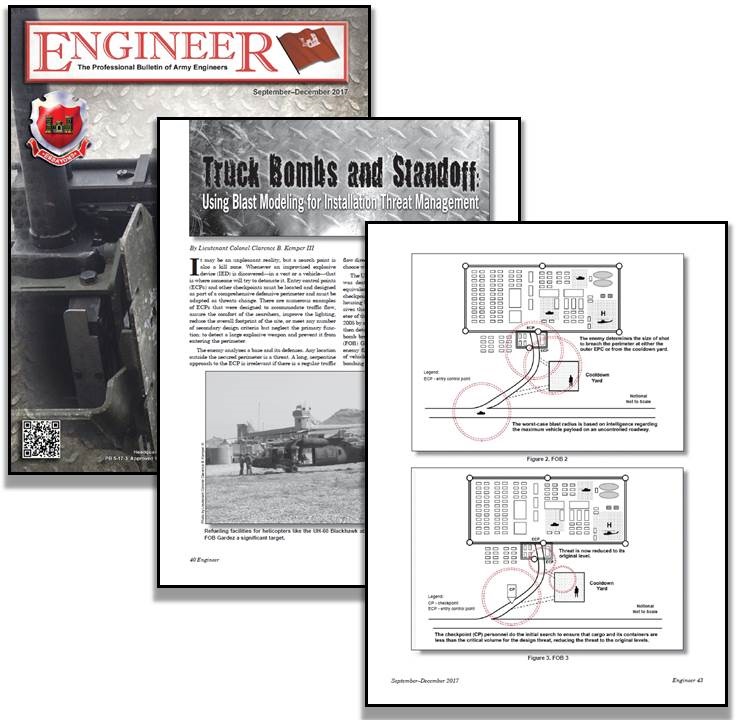Bart Kemper PE, our principal engineer, is also an engineer officer in the Army Reserves. He often uses his civilian-acquired skills and experience in military applications. While his work often concerns current operations and cannot be publicly shared due to operational security, sometimes he is given clearance to publish some of the lessons learned.
He has recently authored the article, “Truck Bombs and Standoff: Using blast modeling for installation threat management”. Just as we use advanced numerical modeling for equipment analysis and development, Bart uses blast software for developing and evaluating facility security. The article is published in the Engineer Bulletin (the Army Engineer publication). The issue is at http://online.fliphtml5.com/tqvn/mcja/
This work was based on experience in Iraq and Afghanistan as an Army engineer officer. During his Afghanistan tour the world’s largest Improvised Explosive Device (IED) was captured, with 60,000 pounds of Home Made Explosives (HME) which was wired to explode. Fortunately, it did not. Kemper performed blast modeling of the threat, which indicated a Coalition base in his area of engineering responsibility (as the Officer-In-Charge of USACE Resident Office Gardez) had to be closed due to insufficient standoff from the highway. An IED this size would be able to damage or destroy the majority of its key assets without going through security. After this event he performed similar analyses for other Coalition sites. This event was used to illustrate the security engineering principles in the article.
EDIT: In 2019 Bart Kemper published a paper at the International Society of Explosives Engineers (ISEE), Blast Modeling for Facility Security Management, regarding the same topic, but with greater technical depth.


Recent Comments